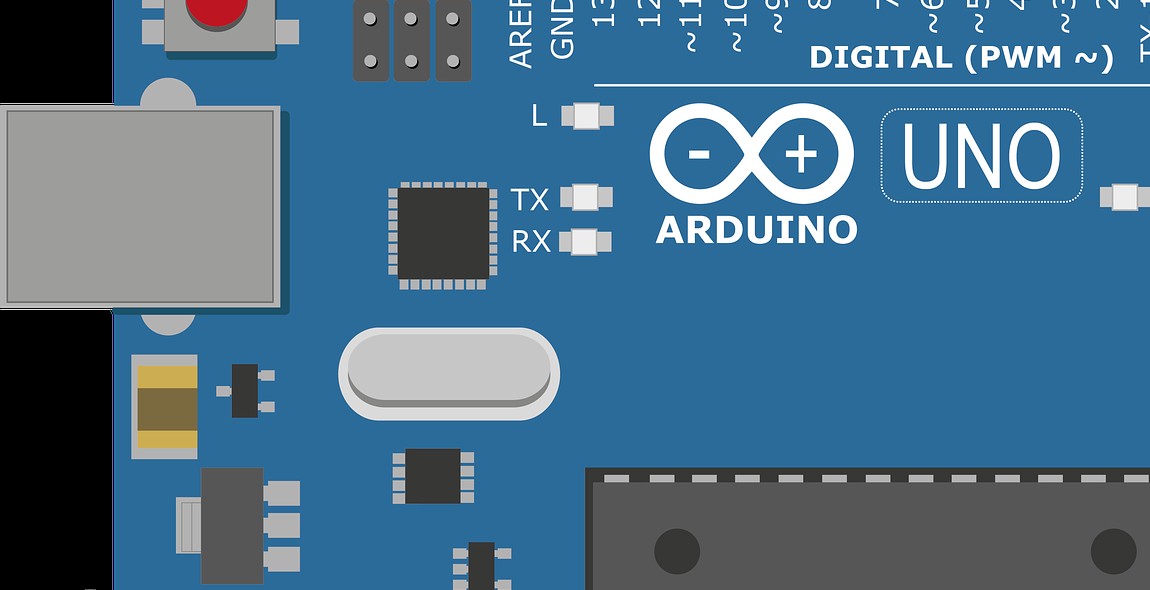Understanding Microcontrollers in Mechatronic Systems
Microcontrollers are small, self-contained computers that are essential in the field of mechatronics. They are designed to control various systems and processes, making them a crucial component in the automation industry. At their core, microcontrollers are integrated circuits that contain a processor, memory, and input/output peripherals. They are programmed to perform specific tasks and execute instructions that are preloaded into their memory.
What are Microcontrollers?
Microcontrollers are designed to control and automate systems in a wide range of applications, including mechatronic systems. They are often used in devices that require precision control and real-time responsiveness, such as robotics, industrial automation, and automotive systems. Microcontrollers are programmed using specialized software and languages, and they can be customized to perform specific tasks.
Why are Microcontrollers Important in Mechatronic Systems?
Mechatronic systems are complex systems that integrate mechanical, electrical, and computer engineering. These systems require precise control and automation, which is where microcontrollers come in. Microcontrollers are crucial in mechatronic systems because they allow for the integration of multiple components and systems, enabling them to work together seamlessly. They are also essential in ensuring that mechatronic systems operate efficiently and safely.
Overall, understanding microcontrollers is critical to the successful design and implementation of mechatronic systems. With their ability to control and automate complex systems, microcontrollers are an invaluable tool in the field of mechatronics.

Types of Microcontrollers
Microcontrollers are available in different types, with each type having its unique features that make them suitable for specific applications. The most common types of microcontrollers are:
8-bit Microcontrollers
8-bit microcontrollers are the most basic type of microcontrollers. They have a processing unit that can handle data in 8-bit chunks. These microcontrollers are suitable for simple applications that do not require a lot of processing power. They are also less expensive compared to other types of microcontrollers.
- Low power consumption
- Low cost
- Less processing power
- Suitable for simple applications
16-bit Microcontrollers
16-bit microcontrollers have a processing unit that can handle data in 16-bit chunks. They are more powerful than 8-bit microcontrollers and are suitable for applications that require more processing power. They are also more expensive than 8-bit microcontrollers.
- More processing power
- More expensive than 8-bit microcontrollers
- Suitable for applications that require more processing power
32-bit Microcontrollers
32-bit microcontrollers have a processing unit that can handle data in 32-bit chunks. They are the most powerful type of microcontrollers and are suitable for applications that require a lot of processing power. They are also the most expensive type of microcontrollers.
- Most powerful type of microcontrollers
- Most expensive type of microcontrollers
- Suitable for applications that require a lot of processing power
| Microcontroller Type | Processing Unit | Applications | Cost |
|---|---|---|---|
| 8-bit | 8-bit | Simple applications | Low |
| 16-bit | 16-bit | Applications that require more processing power | Medium |
| 32-bit | 32-bit | Applications that require a lot of processing power | High |

Programming Microcontrollers
Programming microcontrollers is a critical aspect of mechatronic systems. Microcontrollers are integrated circuits that are programmed to control the behavior of mechanical and electrical devices. They are used in various applications such as robotics, automation, and control systems. Programming microcontrollers involves writing code in a programming language that the microcontroller can understand. There are several programming languages used for microcontrollers, including:
Programming Languages for Microcontrollers
The most commonly used programming languages for microcontrollers are:
- C
- C++
- Assembly Language
C is the most popular programming language for microcontrollers because it is fast, efficient, and easy to use. C++ is an extension of C and offers additional features such as object-oriented programming. Assembly language is a low-level programming language that is used to write code directly to the microcontroller’s memory.
Integrated Development Environments (IDEs)
Integrated Development Environments (IDEs) are software applications that provide a comprehensive environment for programming microcontrollers. IDEs typically include a text editor, a compiler, and a debugger. They also provide features such as syntax highlighting, auto-completion, and code analysis. Some popular IDEs for programming microcontrollers include:
- Arduino IDE
- Keil µVision
- MPLAB X IDE
The Arduino IDE is a popular choice for beginners because it is easy to use and has a large community of users. Keil µVision and MPLAB X IDE are more advanced IDEs that offer additional features and support for a wider range of microcontrollers.
Debugging Microcontrollers
Debugging microcontrollers is an important part of the programming process. It involves identifying and fixing errors in the code that can cause the microcontroller to behave incorrectly. There are several debugging techniques that can be used, including:
- Serial Debugging
- LED Indicators
- Debugging Tools
Serial debugging involves sending debug information over a serial port to a computer for analysis. LED indicators can be used to provide visual feedback on the microcontroller’s behavior. Debugging tools such as logic analyzers and oscilloscopes can be used to analyze the microcontroller’s signals and behavior.
| Debugging Technique | Advantages | Disadvantages |
|---|---|---|
| Serial Debugging | Provides detailed information about the microcontroller’s behavior | Requires a serial port and additional software |
| LED Indicators | Provides quick visual feedback on the microcontroller’s behavior | May not provide detailed information about the error |
| Debugging Tools | Provides detailed analysis of the microcontroller’s signals and behavior | Can be expensive and complex to use |
Applications of Microcontrollers in Mechatronic Systems
Microcontrollers are essential components in mechatronic systems as they provide the necessary computing power to control and monitor various processes. They are used in a wide range of industrial, automotive, and consumer applications, including:
- Industrial Automation: Microcontrollers are used in industrial automation systems to control various processes such as temperature, pressure, and flow. They are used in programmable logic controllers (PLCs), which are widely used in manufacturing plants to automate processes and increase efficiency.
- Robotics: Microcontrollers are used in robotic systems to control the movement of motors and actuators, and to process sensor data. They are used in both industrial and consumer robotics applications, such as assembly line robots and home automation systems.
- Automotive Systems: Microcontrollers are used in various automotive systems, such as engine control units (ECUs), anti-lock braking systems (ABS), and airbag control systems. They are used to monitor and control various parameters, such as engine speed, temperature, and fuel injection.
- Consumer Electronics: Microcontrollers are used in a wide range of consumer electronics, such as smart home devices, wearable technology, and mobile phones. They are used to control various functions, such as display, touch input, and connectivity.
Microcontrollers are also used in mechatronic systems for data acquisition and processing. They can be used to collect data from various sensors and process the data to make decisions and control various processes. They are also used in feedback control systems to monitor the output of a process and adjust the input to maintain a desired output.
Overall, microcontrollers are an essential component in mechatronic systems, providing the necessary computing power to control and monitor various processes. Their applications are diverse, spanning across industrial, automotive, and consumer electronics industries.
Choosing the Right Microcontroller for Your Mechatronic System
When it comes to designing a mechatronic system, choosing the right microcontroller is crucial to ensure the system’s performance and functionality. There are several factors to consider when selecting a microcontroller for your mechatronic system.
Considerations When Choosing a Microcontroller
1. Processing Power: The processing power of a microcontroller is vital to the system’s performance. It determines the speed and efficiency of data processing. Consider the complexity of your mechatronic system and the required processing power to handle the data effectively.
2. Memory: Memory is another crucial factor to consider when selecting a microcontroller. It determines the amount of data that the microcontroller can store and process. Consider the amount of memory required to store and process data for your mechatronic system.
3. Power Consumption: Power consumption is a critical factor to consider when designing a mechatronic system. Consider the power requirements of your system and select a microcontroller that can handle the required power efficiently.
4. Communication Protocols: Communication protocols are necessary for data exchange between different components of a mechatronic system. Consider the communication protocols required for your mechatronic system and select a microcontroller that supports those protocols.
Popular Microcontroller Brands
There are several microcontroller brands available in the market. Here are some popular microcontroller brands used in mechatronic systems:
| Brand | Description |
|---|---|
| Arduino | Open-source microcontroller platform |
| Raspberry Pi | Low-cost, credit card-sized computer |
| Atmel AVR | 8-bit microcontroller family |
| Microchip PIC | 8-bit microcontroller family |
| ARM Cortex | 32-bit microcontroller family |
When selecting a microcontroller, consider the features and capabilities of each brand and choose the one that best suits your mechatronic system’s requirements.

Conclusion
In conclusion, microcontrollers have revolutionized the field of mechatronics by providing a versatile and efficient platform for automation. By integrating various sensors, actuators, and control systems, microcontrollers allow for the creation of complex mechatronic systems that can perform a wide range of tasks with high precision and accuracy.
Understanding the basics of microcontrollers is essential for anyone involved in mechatronics, whether as a designer, engineer, or technician. By learning how to program and interface microcontrollers, you can create innovative solutions that can improve efficiency, reduce costs, and enhance performance.
In this article, we have discussed the key features of microcontrollers, including their architecture, programming languages, and application areas. We have also explored some of the common challenges associated with using microcontrollers in mechatronic systems, such as power management, real-time processing, and communication protocols.
Overall, microcontrollers are an essential component of modern mechatronic systems, and their importance is only set to increase in the coming years. As technology continues to evolve at a rapid pace, it is crucial to stay up-to-date with the latest developments in microcontroller design and programming. With the right knowledge and skills, you can harness the power of microcontrollers to create innovative mechatronic systems that can transform the world around us.
